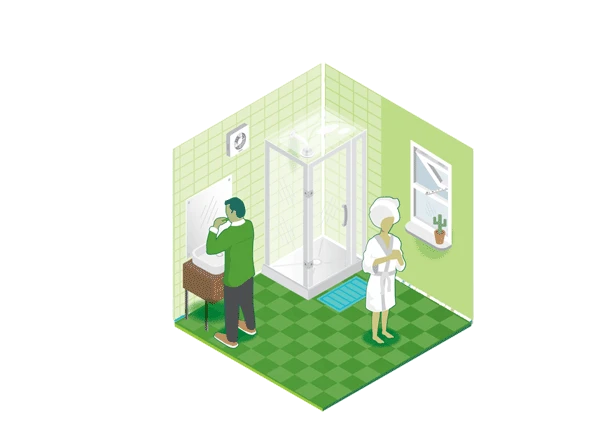Rental homes need to be free from mould and dampness before being rented out. During a tenancy, tenants need to keep the house well-aired and remove any mould straight away.
Before the tenancy starts, the tenant and landlord should go through the property together. Note any damage in the property inspection report (part of the tenancy agreement).
Use this opportunity to:
- look for any signs of mould or damp
- raise any concerns with the landlord
- agree when and how issues will be addressed.
What the landlord should do to prevent mould
Dampness is often from external sources. Check that gutters are clear, and that downpipes and drainage are working.
Under the healthy homes standards, landlords will need to make sure their rental properties have efficient drainage for the removal of storm water, surface water and ground water. The drainage system must include gutters, downpipes and drains for the removal of water from the roof.
If the rental property has an enclosed subfloor, a ground moisture barrier must be installed if it is reasonably practicable to do so. Landlords are not required to install alternative moisture barriers where installation of a polythene barrier isn’t reasonably practicable in the subfloor area.
Healthy homes – moisture and drainage standard
What the tenant should do to prevent mould
Once you move in, you need to keep the house clean and tidy. This includes keeping it in a condition that doesn’t encourage mould and damp. A well-aired, ventilated house is crucial to prevent mould.
You’re most likely to have problems with damp and mould in autumn and winter. A dry, well-aired home is easier to heat and healthier for you and your family.
Open windows and doors whenever you can and open the curtains during the day.
Activities like cooking, bathing or drying clothes create moisture. To remove this from the house, open windows and use any extractor fans.
Other things you can do to prevent mould and damp are:
- keep lids on pots when cooking
- wipe condensation off walls and windows
- hang washing outside, and make sure everything’s dry before putting it away
- leave wardrobes a bit open and pull beds and furniture away from walls
- keep the shower curtain hanging inside the shower or bath so water doesn’t drip on the floor, and wash the curtain every few weeks
- use an electric heater rather than portable gas heaters (these release water as the gas burns)
- keep only a few plants inside
- if you have a mattress on the floor, air the mattress every day by removing the covers and lifting the mattress onto its side.
How to remove mould
To protect the health of everyone in your home, remove mould as soon as it appears.
White vinegar is a cheap and effective way to clean mould. On painted surfaces, dilute the vinegar with water (half and half) to avoid damaging the paint. Leave it for a few days then wipe off the dead mould with soap and water using a clean cloth.
You can also use diluted household bleach. Mix one part bleach with three parts water in a bucket of water.
Use a clean sponge or cloth when washing off mould and rinse it often. This reduces the risk of the mould spreading. Wear gloves, eye protection and a safety mask when dealing with cleaning products and mould.
What to do if the mould won't go away
If you’re doing all the right things, and the house is still damp and mouldy, talk to the landlord.
If hidden sources of dampness are left long enough they can cause expensive damage to a home. A qualified building surveyor may need to check the property. They can check to see if there is a hidden issue causing the dampness.
Last updated: 12 May 2022

